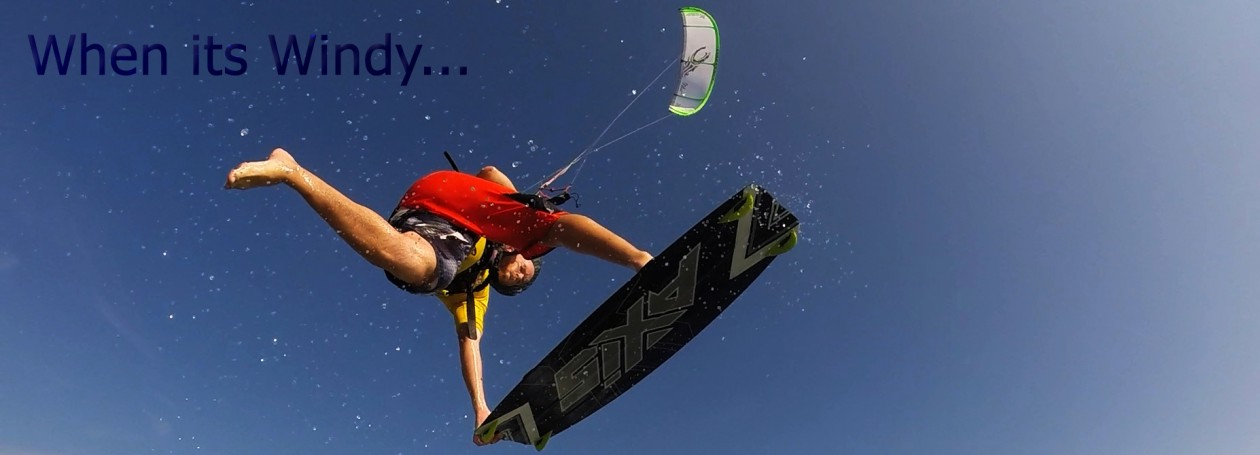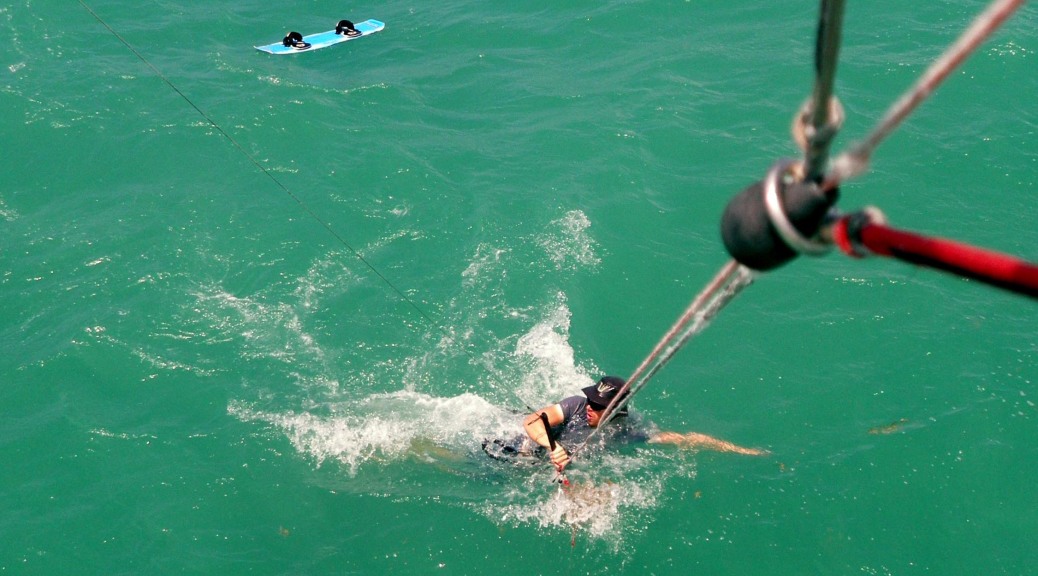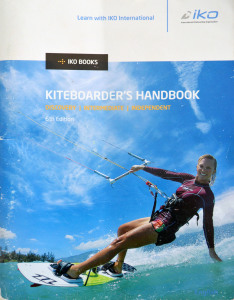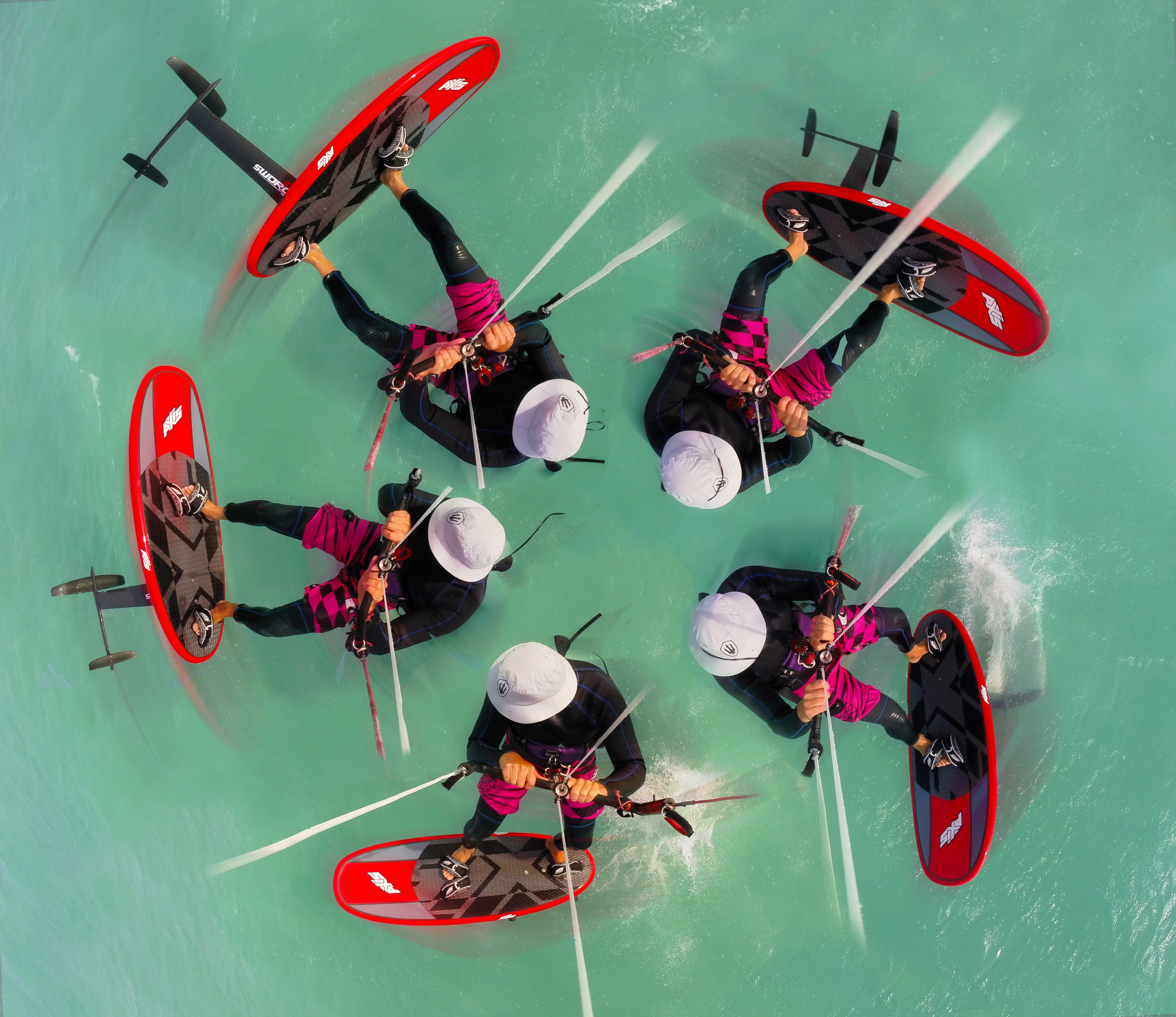Becoming an Independent Kiteboarder
So you’ve finished your series of kite lessons and you can probably ride the board downwind or maybe you’ve already made some progress with riding upwind. Hopefully you’ve then taken the important leap and have splashed out some hard earned cash on your own gear.
What next?
The next steps in your kiting life can be quite daunting as they will be your first sessions without the supervision of an instructor. I hope we can make it less daunting for you by giving you our top 10 tips for an easier life after kiteboarding lessons. Most of them involve preparation before your sessions so you can get started straight away even without wind.
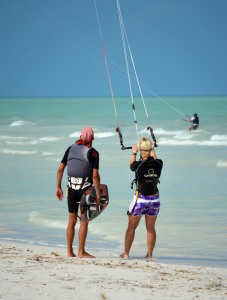
- Buddy up!
Don’t do it alone, try to hook up with some other kiteboarders in your area.
Company, advice, safety or even car sharing are some of the benefits. Finding local kiters is normally fairly easy – they’re the guys and girls wearing boardies over their wetsuits.
If you can’t find any try asking your instructor, internet forums, local kite clubs, kite shops or heading down to the beach.
Finding someone at the same stage is even better. In this case share one set of equipment. Take turns with your buddy to be the board spotter and then kiter. It will give you time to rest and the opportunity to help each other if needed. Once you’ve gained a bit of confidence go out at the same time but always act as look out for each other. If one of you gets into trouble, the other should be able to call for assistance if necessary.
- Familiarise yourself with your own equipment…
Make sure that you know how to set up your kite and bar, how to adjust it and most importantly how all of the safety systems work. A great starting point is to read the manual. Once you know how they work practise using them. Activate the quick release and rebuild it.
If it’s not obvious how something works ask the guys at the shop where you bought it. (If they don’t know – change shops!)
Check your board’s set up. Check that the foot pads, straps and fins are in the correct positions and are securely bolted down. Ask a more experienced kiter to check it for you.
Poor stance set up can hold your progression back. It’s not unusual to see beginners with boards set up in an unusual way.
At this stage a symmetrical slightly ducked stance is a good place to start, normally somewhere around shoulders width apart. The straps should allow your foot to enter fairly easily but offer support from above and the sides. Too loose and they can be problematic for your ankles / Too tight and you will struggle to get the board on your feet.
- Mental preparation
Refresh what you learnt in kite lessons before heading to the beach. Try to read through any instructional material that you have and watch some instructional videos such as those produced by IKA, IKO or the Progression videos by Fatsand.
Concentrate especially on material which focuses on Launching/landing, set up, bodydragging upwind/board recovery and site assessment. Preparing yourself in this way will reduce stress at the beach as these important skills will be fresh in your mind.
Arriving at the beach unprepared can mean situations can become overwhelming fast. Most people faced with stressful situations have a tendency to tense up. Tensing up whilst flying the kite can be particularly problematic as you will have a tendency to pull the bar. Remember pulling the bar usually makes stressful situations worse. Be as prepared as you can in all respects.
Check the weather forecasts. Find out which ones work best for your spot. You’re looking for stable winds between 12 and 20 knots in an ideal world. Beginners practising in winds that are too strong is a recipe for accidents or frustration. Conversely if the wind is too weak you may have trouble with relaunch and will have to swim back.
- Talk to the friendly locals
It can sometimes be a little intimidating as a newbie but introducing yourself to the locals is usually going to benefit you. Most Kitesurfers don’t bite although there may be one or two exceptions.
Some important questions to ask about the spot:
- What hazards are there to look out for at the spot?
- Where do people normally set up, launch / land?
- Are there any problems due to tides?
- Are there any wind effects to be aware of? (Upwind obstacles, Bay effect, uplift, turbulence, convergence, divergence, venturi etc.)
Asking questions like these will help you to have a more complete knowledge of the spot before you start. You’ll probably meet some interesting kiteboarders in doing so.
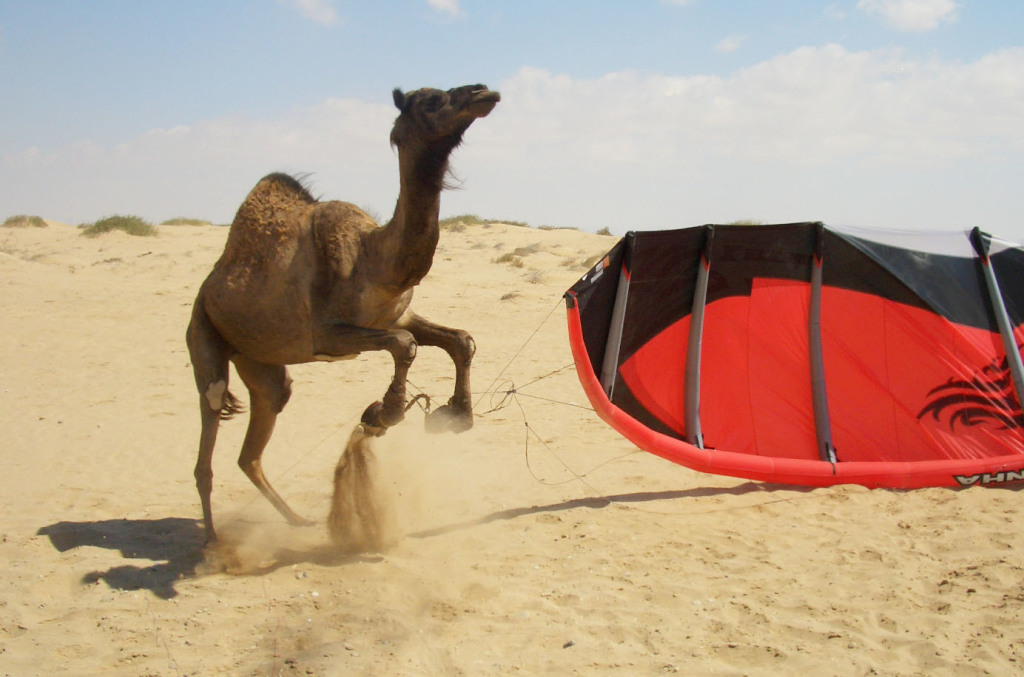
- Don’t rush your set up.
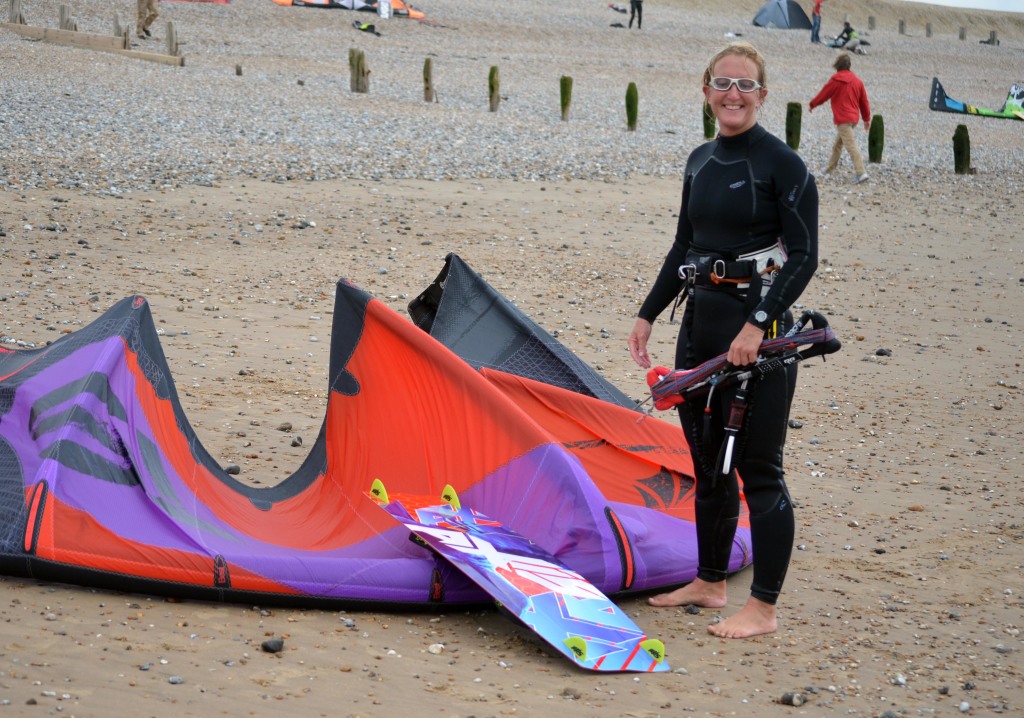
When you get to the beach don’t rush your set up. Try to form a routine. Take your time separating your lines and don’t forget your pre–flight check.
- Canopy for holes/rips
- Safety systems function
- Kite doesn’t lose air
- If your kite is one pump, have you closed all of the clips?
- Are all valves securely closed?
- Lines, bridles and any pulleys are free of damage and work properly.
- Foot straps are set to the right size.
- Kite leash is attached securely to harness.
- Safety knife is sharp and un-corroded.
- Think about the launch
The launch is often a stumbling block for beginners. Plan how you intend to launch before asking anyone for help.
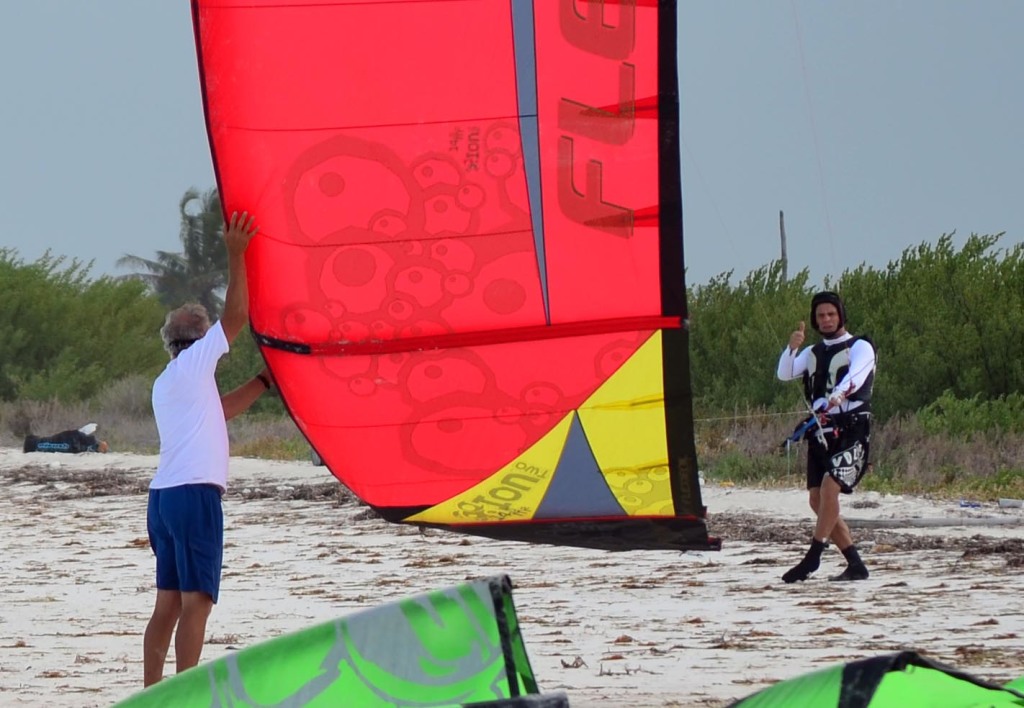
Some important points to remember:
- Check the wind direction.
- Ask an experienced kiter to help you launch.
- Ensure that your wind window and downwind area is clear of people and hazards.
- Don’t tighten your lines until you are slightly downwind of the kite.
- Check that your lines are connected correctly whilst slightly downwind of the kite.
- Ensure the depower adjuster is not set to full power, better slightly depowered.
- As you walk round into the wind try to maintain some tension between your harness and the kite.
- Keep walking slowly into the wind until you see the canopy become taut.
- Check your wind window again.
- Using the bar apply some tension to the upper steering line, but don’t pull the bar close.
- When you are sure that both you and the kite are ready, clearly make the thumbs up launch signal with your upwind hand.
- Carefully fly the kite up to around 10 o’clock or 2 o’clock. Never rush directly to 12.
- If anything goes wrong – Let go of the bar and be ready to quick release with your other hand.
- Important – Never hold the board at launch..
Mentally rehearsing your launch like this will make it safer and easier for you rather than rushing into it all guns blazing.
- Leave your board on the beach
If it’s your first unsupervised session leave the board on the beach.
- Fly the kite to help build your confidence.
- Practice kite control at the edge of the wind window, upwind/downwind bodydrags.
- Practice some power strokes to get used to the wind.
When you feel comfortable go get the board and your session will be much more productive.
- Manage your kite zone
Before launching the kite check out your spot and set yourself limits.
Set yourself:
- An upwind entry Point A
- A downwind exit Point B which should be a safe distance at least 100m upwind of point C
- Point C should be your absolute downwind limit that it wouldn’t be wise/safe to pass.
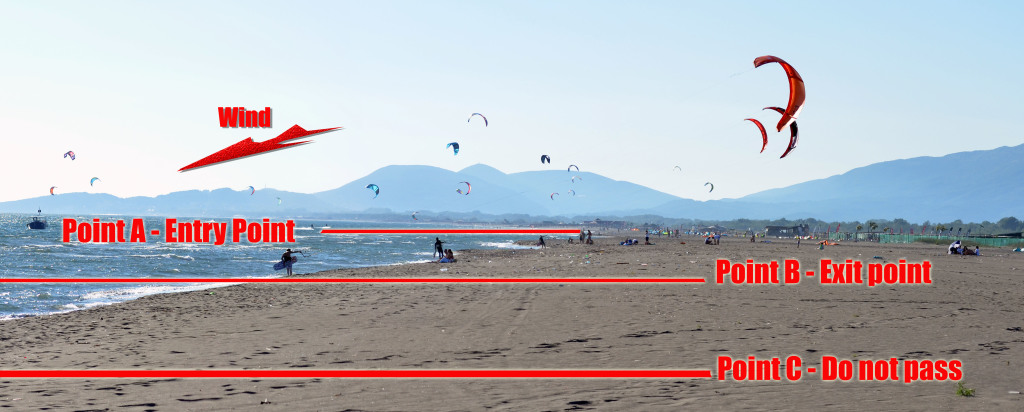
Aiming to leave the water before you reach point B should allow you plenty of space if something does go wrong.
Even if your beach has no major hazards downwind still set yourself these points. They will help you to become more aware of your surroundings.
Don’t ride out further than you are able to swim back. If the worst does happen and you lose your kite or the wind stops you need to be able to swim to shore.
Anticipation like with driving comes with experience, but always attempt to anticipate problems before you reach them. To stop, turn around and ride the other way is much safer than panicking and riding into the problem.
- Make good use of your time
If the wind is too light to ride your board, take advantage of this time and practise flying the kite.
Some good light wind exercises:
- Water re-launch
- Self-rescue
- Bodydrags
- Powerstrokes
- Launch and Land
- Self-Land
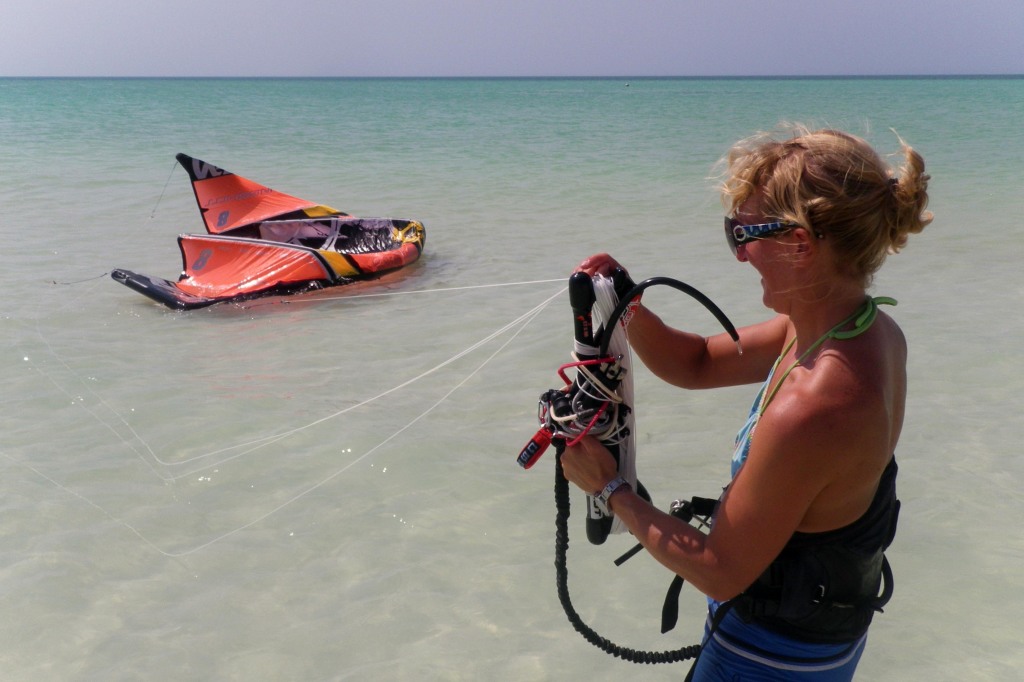
Remember that kite control is the key to kiteboarding. The more you fly the kite the easier everything becomes.
When riding the board try not to make monster length runs to start with. You will progress much faster by making short runs of not more than 100m, stopping/turning and riding back the other way.
If you’re having a tough time with a particular aspect of kiteboarding ask someone for help. Give your instructor a shout they’ll often have some pointers for you that may help or maybe an extra hour of lessons could speed things up.
10. Safety gear and other useful equipment
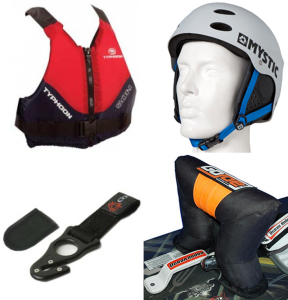
Wear your helmet, wear your buoyancy aid. They’re not only for lessons.
Your helmet is good protection from the board and other kiteboarders.
Your buoyancy aid will do exactly that, aid your buoyancy when your kite is down in a relaunch situation or even more importantly in a self-rescue situation.
Wrapping up your lines to get to the kite in deep water is far less tiring whilst wearing additional buoyancy.
In most places a wetsuit or drysuit is a very good idea. You may feel warm whilst riding without one but as soon as you encounter problems your body temperature will drop fast.
Board leash – Don’t do it!
Learn to bodydrag upwind efficiently and you should not need one. Ocean Rodeo makes a nice device called a GoJoe which I can highly recommend. They make your board more visible and also allow the wind to push the board downwind a little faster (or you could use the cheaper alternative and tie an orange kiddie’s arm band to your board.)
Coming soon Cathy’s first time buyers guide, Self Rescue video and Rights of way.
